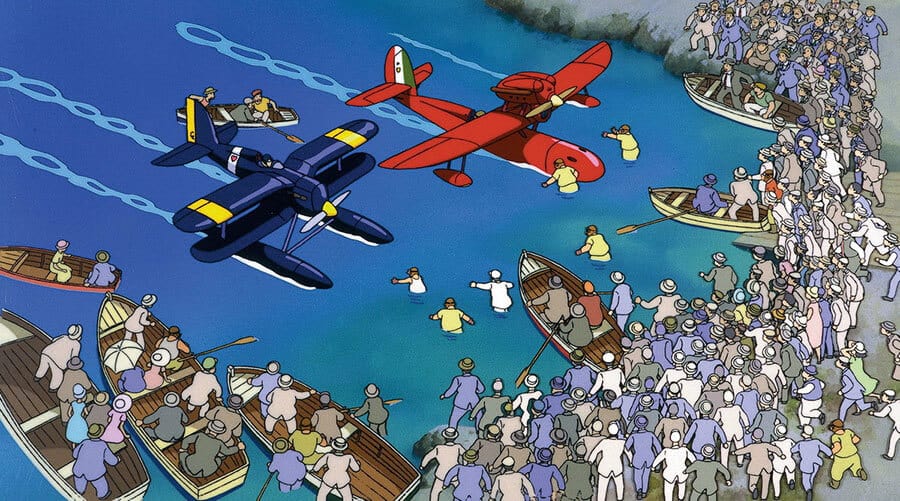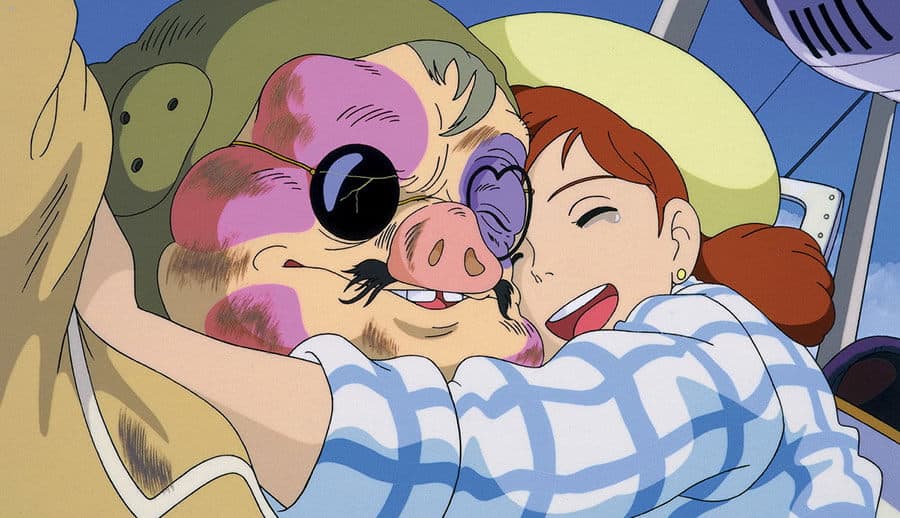Hayao Miyazaki is one of those rare creators who connected deeply with the story inside the plot. Accurately, he has melted in his animations. He posed each story to a conversation with the subconscious mind and translated his own feelings into the characters. The works of Hayao Miyazaki are not just children’s cartoons, but histories with profound sensibilities, sometimes not entirely meant for kids. In this article, we will talk about his signature animations - 'Porco Rosso' and 'The wind rises'.
In the first article on Hayao Miyazaki, we talked about `My Neighbor Totoro` and `Spirited Away`. Before I start with reviews of `Porco Rosso` and the cartoon `The wind rises`, it would be better to light some facts about Miyazaki.
It was up to his mom, who had struggled with spinal tuberculosis during the whole life. Because of bed rest, she had deprived attention for her sons. Henceforth, Hayao used to feel lonely and thoughts about his mistaken birth appeared much often. In other words, he was a hurt child with strict inner worries and physical weaknesses. However, the world of animation became a kind of treatment and connection with the environment to talk about senses.
Mother and aviation: what impacted the stories Miyazaki told?
There are several things that have had a global impact on all of his stories: the war and aviation, mother, and limitless mental anxiety. Passion for the war and sky were intercepted slightly as Japanese aircraft designed to destroy.
But flying in the endless blue sky remains the animator’s passion throughout his career. Both, `Porco Rosso` and cartoon `The wind rises` talk about the love of airplanes. Whereas the flight he depicted as a subtle, perfect symphony of the soul and the sky, merged into the time. He spent many days intertwining with classical music and looking at the sea horizon also. He found out the sea as the endless road and freedom, which could only be seen in the sky and in the sea. So his love of animated landscapes began, which today is known as his author’s handwriting.
During his mother’s illness and after her death, Hayao rarely spoke of his feelings about her. Sometime after her death, he started adding characters with mother`s tempers. Like in the cartoon “My Neighbor Totoro”, where the mother has to discipline her children being sick. He also noted that she was kind and brave, like the air pirate Dola of “Castle in the Sky”. But most of all, he showed in the last feature film, “The wind gets stronger”. Where the main character’s wife got sick and then died of tuberculosis. This was the final picture of his creative career. After that, he felt that he was getting a distance from the movies. According to his words, it couldn`t resist the gut feelings, as he always has to follow the ritual.
Porco Rosso
That was a story about a pilot, who crashed while shooting in The World War I. All troops died, but only he was that man to save and in after all fighting turned into the Pig. He drove red aircraft `GHIBLI`, what was symbolic and derived from Caproni’s Italian fighters, who took part in the shooting over the Sahara.
Marco lost faith in people and the appearance of the pig symbolized a repulsive shell. It’s also a distortion of the world where everyone is chasing beauty and has no memory of the qualities of a nobleman. I mean only a man who can see the soul behind his callousness and sunglasses can understand the pain that made him become like that.
During the First World War, Marco was a fighter pilot. After the hostilities, he became a mercenary in a pirate band. He eliminated robberies and murders. He was a local hero. This cartoon shows the adult themes of politics, the beauty of women, the hard work, and prayer. It also shows stereotypes about women’s roles. One singer was very feminine and elegant. This was what the woman would look like thought Miyazaki and the Japanese.

But the young girl Fio, the aircraft designer – on the contrary, did not fit the description above. She was smart and talented, brave, curious. I think for Marco, she became a memory of himself as a young man, also a source of inspiration to him. Because she made him believe people again. Her kindness and courage became the hope of his life. Perhaps Hayao also portrayed some of the qualities of his mother. So this girl changed the lives of heroes a lot.
In general, Hayao contrasts sharply the sky, battles, and women. For instance, the women were helping to build the planes, Fio was bravely arguing with another US mercenary – Curtis. Hayao showed beauty and femininity as a distinct force, a trigger mechanism for meaningful things, as well as respect for everyone.
Telling stories about the sky, Miyazaki played to his strengths. It’s so deep and bottomless, how much could it hold?
`The Wind Rises`: love and dreams that drive us to grow
`The Wind Rises`, perhaps, is one of Miyazaki’s most adult animations. It is full of situations that convey the meaning of life, from the extremes of love to the death of a loved one and military invasions.
According to his biography, Hayao Miyazaki was born in the family of an aircraft designer. His father was very closely connected with the sky and created `iron birds`. Therefore, the theme of aviation was special. The story tells about a boy who has been in love with aviation since childhood and dreams to dedicate his whole life to it.
Japan is on the brink of the Second World War. Together with German factories, the Japanese are working on aircraft for the pending hostilities. Jiro, the protagonist, dreams of being one of the designers. He is fanatical about it. Since childhood, he has had an idol, an Italian aircraft designer Caproni, with whom he mentally intersects in thought and sometimes in colorful dreams. The sky is his first love, a childhood dream that he has followed all his life.
The second love is his girlfriend, Naori. He has met her on the train, a few minutes before an earthquake. They live near Tokyo. Jiro helps Naori get to her family. Then they part ways, but one day they meet again and decide to get married. So in Jiro’s life, love of the sky and love of Naori turn into a path to a dream. However, Naori’s life is shortened by tuberculosis. In a beautiful allegory, as aircraft and people both disappear in the sky, the filmmaker shows us the price of momentary pleasures, spent in love.
Jiro creates planes that are designed to destroy, and disease gradually destroys his wife. But in the beginning, he has the option of leaving his life’s work and going with his wife to the mountains, where she simply needs to be. In the end, Jiro decides to stay in the city, making a selfish choice as he cannot give up his childhood dream for the love of his wife. But while we live, we should always make choices. And sometimes it can be quite selfish, and sometimes we just can not do otherwise. Should I leave the job that I have always aspired to, for the sake of a fantasy of a recovery, or choose the enjoyment of the moment of now while there is an opportunity to be together without changing anything? This is what Hayao Miyazaki reveals.
A new 4-series docudrama – “10 Years with Hayao Miyazaki” – was released earlier this year, covering ten years of his creative life from the animated film “My Neighbor Totoro” to the Oscar-winning “Spirited Away.” The series probes his thoughts about life and death, and aging, and his relationship with his son, director Goro Mіyazakі.
Photos: MovieStillsDB
Read more reviews from the author.
What Hayao Miyazaki Has Been Saying to Us: Echoes from Childhood
Support us!
All your donations will be used to pay the magazine’s journalists and to support the ongoing costs of maintaining the site.
Share this post
Interested in co-operating with us?
We are open to co-operation from writers and businesses alike. You can reach us on our email at cooperations@youthtimemag.com/magazine@youthtimemag.com and we will get back to you as quick as we can.









